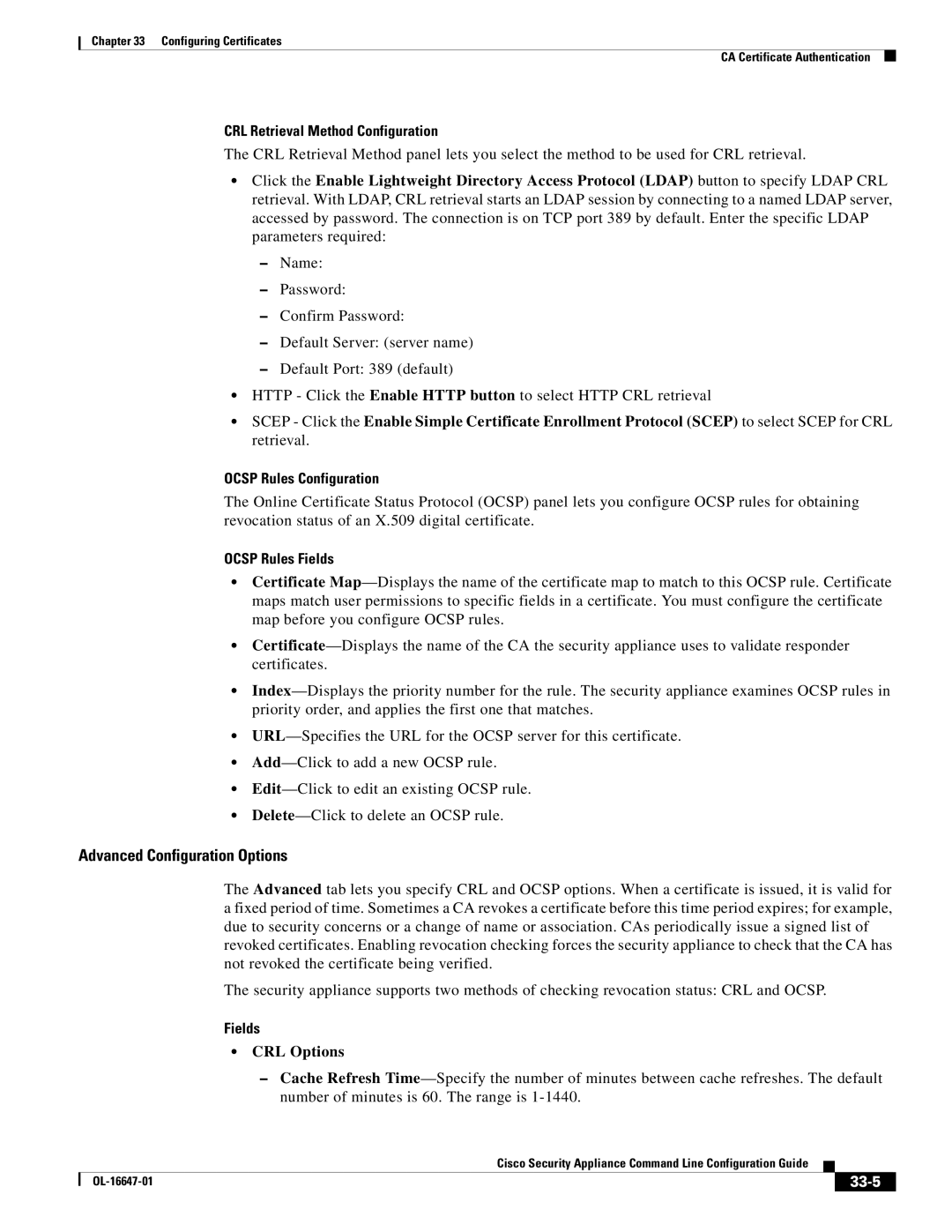Chapter 33 Configuring Certificates
CA Certificate Authentication
CRL Retrieval Method Configuration
The CRL Retrieval Method panel lets you select the method to be used for CRL retrieval.
•Click the Enable Lightweight Directory Access Protocol (LDAP) button to specify LDAP CRL retrieval. With LDAP, CRL retrieval starts an LDAP session by connecting to a named LDAP server, accessed by password. The connection is on TCP port 389 by default. Enter the specific LDAP parameters required:
–Name:
–Password:
–Confirm Password:
–Default Server: (server name)
–Default Port: 389 (default)
•HTTP - Click the Enable HTTP button to select HTTP CRL retrieval
•SCEP - Click the Enable Simple Certificate Enrollment Protocol (SCEP) to select SCEP for CRL retrieval.
OCSP Rules Configuration
The Online Certificate Status Protocol (OCSP) panel lets you configure OCSP rules for obtaining revocation status of an X.509 digital certificate.
OCSP Rules Fields
•Certificate
•
•
•
•
•
•
Advanced Configuration Options
The Advanced tab lets you specify CRL and OCSP options. When a certificate is issued, it is valid for a fixed period of time. Sometimes a CA revokes a certificate before this time period expires; for example, due to security concerns or a change of name or association. CAs periodically issue a signed list of revoked certificates. Enabling revocation checking forces the security appliance to check that the CA has not revoked the certificate being verified.
The security appliance supports two methods of checking revocation status: CRL and OCSP.
Fields
•CRL Options
–Cache Refresh
|
| Cisco Security Appliance Command Line Configuration Guide |
|
| |
|
|
| |||
|
|
|
|
| |
|
|
|
| ||
